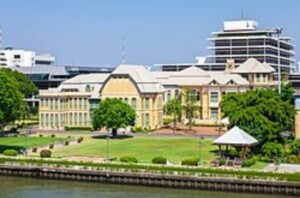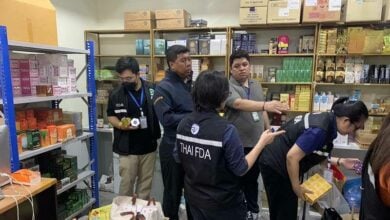What is the Pharmaceutical Benefits Scheme?

The Pharmaceutical Benefits Scheme (PBS) ensures that every Australian citizen, permanent resident, and person with access to reciprocal healthcare agreements has access to medication at an affordable price. Through government subsidies, people only have an out-of-pocket cost for each medication at a fixed maximum amount, regardless of the cost of the drug.
People on pensions and low incomes receive additional subsidies, promoting equity in a system that ensures affordable healthcare for the nation. The PBS is at the forefront of Australian health policy, costing the government approximately AU$17.7 billion in the 2023 to 2024 financial year alone.
The PBS, among other healthcare policies, is why Australia boasts one of the best health systems in the world.
The Australian federal government, based on the advice of the Pharmaceutical Benefits Advisory Committee (PBAC), negotiates the lowest prices for essential drugs. For these reasons, Australians pay some of the lowest medication prices.
The government continues to support the scheme, reiterating that it is effective and enjoys bipartisan support. This comes amid recent criticism from the current United States administration that American drug manufacturers should be able to charge Australia higher prices.
As pharmacy owners, this essentially means the federal government has a strong hold on store margins through their main revenue stream, which, conversely, feeds into low profitability for prescription dispensing under the PBS. This hard-line drug pricing negotiation process aims to benefit the health and hip pocket of the country, and is not aimed at the profitability of an individual trader.
What are the Pharmacy Location Rules?
The Australian Pharmacy Location Rules were established under the National Health Act 1953, are jointly overseen by the Australian Federal Government and the Australian Pharmacy Guild. These rules standardise the approval process for pharmacies to supply medicines under the PBS scheme, allowing the store to be reimbursed for the gap between the patient’s out-of-pocket cost and the price of the medication.
While a pharmacist can open a pharmacy anywhere and dispense prescriptions, only PBS-approved pharmacies can provide government-subsidised medicines. Hence, the pharmacy location rules regulate the distribution and number of stores seeking approval to dispense medication under the PBS.

A key benefit of the location rules is that they ensure that communities have equitable access to essential pharmaceutical services (not just PBS prescriptions but additional healthcare services like medication reviews, Webster packing, and vaccinations).
Location rules ensure that pharmacies can operate with certainty that the local area around the store will not become oversaturated. This arrangement allows them to maintain a viable and profitable business regardless of the low margins involved with a business focused on PBS prescriptions. It creates a win-win situation for the government, everyday Australian residents, and pharmacy owners, who can rely on the stability of their business under this scheme.
What do you need to know as a business owner?
It is essential to recognise that several location rules exist. Only one of these rules needs to be fully met for the government to issue a new PBS approval number. Due diligence is necessary when applying and investing under a particular location rule, as it is very easy to overcapitalise, especially when blinded by the emotion of starting a business.
Additionally, the risk of an application being rejected due to failure to secure a PBS approval number must be assessed very carefully. Jason Tavakol, as an owner of numerous successful pharmacies, has navigated and helped many pharmacy owners establish new PBS licenses under these laws.
Critical components of location rules
1. Distance requirements between pharmacies
One of the most common elements in each location rule is the minimum distance mandated between pharmacies. This ensures a fair distribution across communities and prevents excessive competition within a small area.
The required distance may vary based on population density and available amenities in the area, such as supermarkets, medical centres, and allied health services.
2. Population-to-pharmacy ratios
It is crucial to consider population size and growth when determining the establishment of new PBS-approved pharmacies. Areas with larger populations may accommodate more pharmacies, whereas rural regions have differing guidelines to balance supply and demand.
This ensures that if the pharmacies are successful and the community needs are met. To the credit of the Australian government and their enforcement of these rules since the inception of the PBS scheme, they have laid the groundwork for the growth and continued success of the scheme.
3. Restrictions on relocating existing pharmacies
Pharmacies cannot simply relocate without regulatory approval, particularly if the new location disrupts the store’s distribution and balance in the area. Typically, in Australia, a pharmacy may relocate the store (and the attached PBS approval number) once every five years, and only within a distance of one kilometre as the crow flies from the original store.
There is a caveat where a maximum of one and a half kilometres is permitted if the move is more than 500 metres from the nearest pharmacy. This regulation ensures that the distribution of pharmacies in each location does not change significantly or frequently, preserving the community’s access to PBS medication.
4. Special considerations for rural areas
Location rules are designed to be more flexible in rural or underserved areas, encouraging new pharmacies to open where needed most. These relaxed rules help ensure that people in these regions have access to pharmacy services.
Another consideration is that the Australian Health Minister has discretionary power to grant a PBS approval number in areas that do not meet the location rules if it is mandated that there is a genuine community need.
The minister has successfully granted Jason a PBS number at their discretion. However, there is a downside to this. These applications are costly and typically take about one year from the date of the initial submission. Additionally, they are complicated and require extensive planning and preparation to succeed.

Compliance and enforcement
Various national and local regulatory bodies oversee pharmacy location rules. They are responsible for granting licenses, approving new pharmacy locations, and ensuring compliance with the established regulations.
Pharmacy boards, councils, and health ministries such as the Australian Community Pharmacy Authority (ACPA) work together to monitor and enforce these rules. This ensures pharmacies are built to a certain standard and provide consistent and affordable medications and healthcare to all Australians.
Consequences of non-compliance with pharmacy location rules and PBS regulations can lead to penalties, such as fines, loss of pharmacy licenses, or other legal repercussions. These penalties, including the deregistration of a pharmacist, can be severe; hence why it is crucial for pharmacy owners to fully understand and adhere to these regulations to avoid costly consequences.
Impact on the Pharmacy Business
Location rules are designed to facilitate the establishment of a pharmacy in an area where there is a community need and, at the same time, hinder market entry to prevent oversaturation. This offers new businesses a fair opportunity, and existing business owners security that providing medication to the community at the fixed PBS pricing set by the authorities remains commercially viable.
Implications for pharmacy owners and the public
Pros:
- Helps maintain a healthy pharmacy environment, whilst still encouraging a competitive market which leads to lower prices for the community.
- Ensures fair access to pharmacy services for all communities.
- Protects smaller pharmacy businesses, enabling them to remain sustainable and provide consistent quality of service.
Cons:
- The scheme may limit growth opportunities for pharmacy owners, especially in densely populated areas.
- Rural pharmacies might struggle to meet location requirements, making it more challenging to open new stores.
- If the expected risk of failure is too high compared to the required capital investment, an area may be left without community access to vital medication on the PBS.
- Many pharmacists lack the expertise to identify such locations, causing certain regions to miss out on a PBS-approved pharmacy.
- In some complicated applications, it can take years before the pharmacy is operational.
- City Council zoning rules can also hinder the establishment of a Pharmacy.
Jason Tavakol, with his extensive experience in the pharmacy industry, understands the importance of thoroughly investigating and complying with these regulations as well as understanding the cost-to-benefit ratios.
Jason’s perspective emphasises careful planning, compliance, and seizing opportunities in underserved areas, ultimately benefiting pharmacy owners and their communities.
For pharmacy owners to succeed, pharmacy location rules are absolutely critical. Understanding the regulations, meeting the requirements, and collaborating closely with regulatory bodies make all the difference between success and failure.
Press release
Latest Thailand News
Follow The Thaiger on Google News:
































